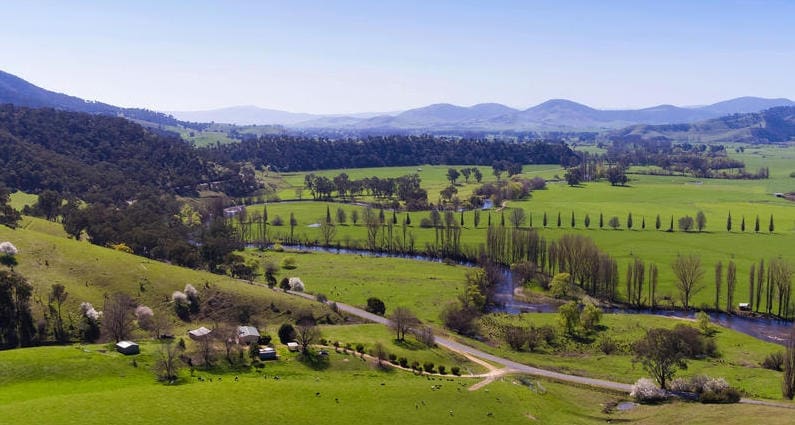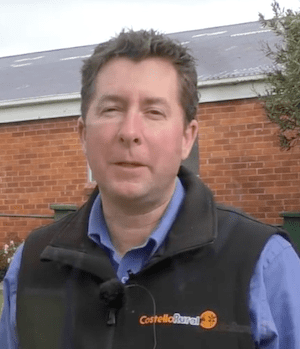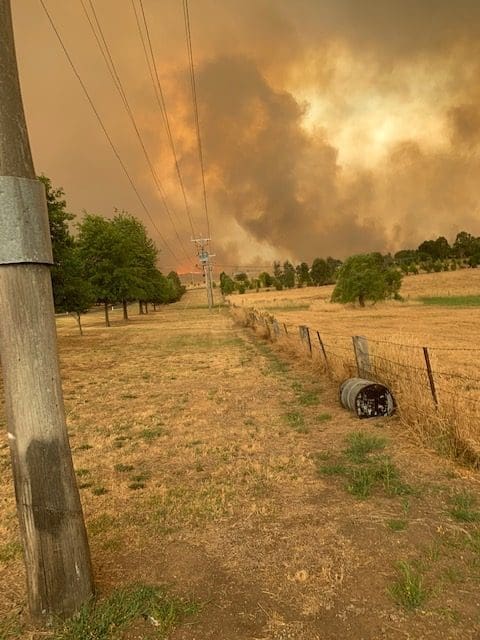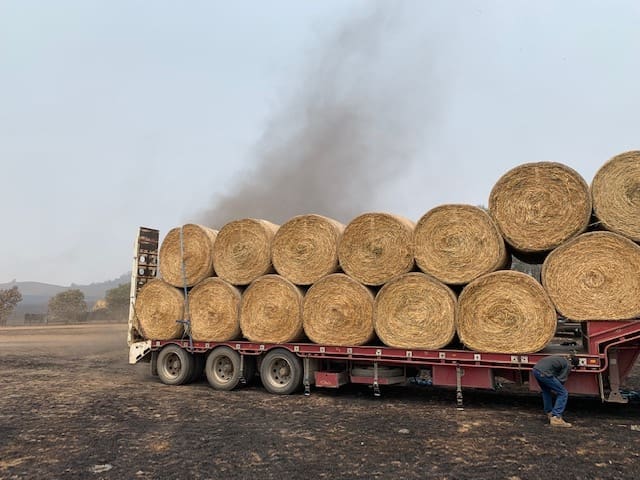
A more common scene from the picturesque upper Murray region. Picture: Costello Rural.
Corryong is a cattle, dairy and timber town renowned for its rich productive river flats on the Upper Murray below the slopes of Australia’s highest mountain.

Juston Costello
120km from the nearest large population centre, Albury-Wodonga, the community of around 2000 people is very self-reliant, highly independent and extremely close knit, according to local cattle producer and stock and station agent Justin Costello.
Christmas and New Year in Corryong, like elsewhere in Australia, is usually a time of peace, fun and relaxation.
But every ounce of that independence and resilience was tested when a massive bushfire engulfed the idyllic location with little warning just as 2019 clicked over to 2020.
While they had experienced bushfires before, no one realised the scale or magnitude of the danger and devastation that was coming.
Waiting on his family cattle property for the fire to approach, Justin Costello recalls feeling “suddenly very isolated”.

Picture: Justin Costello
Earlier in the day police had delivered a letter informing them they would be on their own if they chose to stay.
With no power, no mobile phone coverage and no communication, they had no way of plotting the fire’s course or knowing when it would hit.
All they could see was “just the red” coming at them from three sides.
“It suddenly got very real,” Justin said.
“You are thinking is my plan robust enough to survive?”
They had done what they could to prepare, including moving cattle off pastures and into yards and placing bales of wrapped silage into dams to preserve feed for the aftermath.
Justin said it was a strange experience when the fires finally hit.
“Suddenly the smoke cleared, we saw the sun, and then it got really hot – it changed from 18 degrees to 44 degrees really quickly – and that it is when it all fired up.”
The Costellos were assisted by friends – remarkably some who had lost their own houses and farms to the fires but still put aside their own devastation to help out – along with Rural Fire Service volunteers and a bulldozer which helped to cut additional break lines.
After exhausting days their family home was saved, but the Costellos lost all five hay sheds, four areas of stockpiled silage, standing paddock feed and water infrastructure.
The strategy of yarding cattle helped to significantly minimise stock losses, while the silage they placed in dams helped to ensure cattle could be fed in the days following the blaze.
Their cause wasn’t helped when their solar generator failed in the thick smoke, inhibiting their ability to pump water as the fire approached. On the advice of a local pump technician they were able to use an inverter to pump water from tanks to their cattle inthe yards. In the searing heat the cattle quickly drained the tanks, and the water tanks then burned to the ground when the fire came through.
Tree plantations and shelter belts literally added fuel to the fire: “it was like throwing avgas onto it, it would just take off every time,” he explained.
Justin estimates that 80 percent of cattle properties in the region were affected by fires, with some producers losing almost their entire herds.
A large number of surviving cattle were standing on burning pastures and have been left with burned teats, feet and legs. Many were due to calve in autumn but are now aborting calves.
Recovery
A little over one week since the bushfires thick smoke still blankets the town, power is yet to be restored, and many people are still unable to return to their farms.
Amidst these pressures and the trauma they have already endured, producers are being forced to make extraordinarly difficult decisions in a landscape devoid of feed, and in many cases, water infrastructure.
 “It comes down to priority lists,” Justin said. “Where is the first priority – for a farmer it is animal health, they really want to keep the animals healthy.
“It comes down to priority lists,” Justin said. “Where is the first priority – for a farmer it is animal health, they really want to keep the animals healthy.
“They care about their animals and it is killing them that they can’t keep them, and they are really struggling to work out a plan to feed them.”
Where water infrastructure remains intact Justin said producers are trying to move stock into containment areas to feed them so they can keep what is left of their core breeding herds.
“Where we are at the moment is how do we fence them in, how do we feed them, and how do we water them,” he said.
“There are a lot of those demons, and they are demons, because your generator breaks down and you have got no water, you have got no tanks because they’re burned.
“There are all of these stresses that are constantly coming up every day, it is hard because you can’t water problems like that really quickly.
“But we also want people to have confidence that there is help from outside.
“Other people have fed cattle for years in these situations, infrastructure is replaceable, but your core breeding herd is very hard to replace.
However many were also choosing to destock what cattle they have left.
“There has been massive losses in many different layers like homes, infrastructure, herds, and that is really hard for the farmer to think about how to feed cattle so they’re just sending the balance of the cattle away.”
Help needed to move cattle away
Mal Rogers, Territory Manager for Gippsland & Tasmania with Tama Australia, has been spending recent days helping producers with fencing and moving cattle.
He said while assistance is focused on helping people to bring in fodder, he said what many affected producers have told him they desperately needed is support to move cattle out.
“No one has picked up that they actually need help getting cattle out of here,” he said.
“The Government is picking up the tab up to $4000 to bring feed in, which is fantastic, but they need that sort of fuel subsidy for guys to be able to relocate cattle or send them to market or feedlots.”
‘Beautiful stories of resilience’
Justin Costello said that with the devastation has come extraordinary acts of generosity, including by people who have lost everything themselves.
“One guy who lost his home rocked into the pub because that was our safe zone for the town, and I said, ‘look I can’t keep going and fighting these fires’, and he said ‘I will jump in and drive’.
“So he was driving the ute trying to go around and put all the spot fires out.
“Another mate of mine who lost his house and both his farms in the new year’s fire came and helped me for a couple of days.
“There are just these beautiful stories of resilience.
“The local pub has been the nerve centre of communication between who has lost their house, where the help is, all those little things, those pubs like the Tintaldra and Cudgewa hotels have been fantastic for the valleys.
“The generosity of people has been amazing. Donations of fodder, that is probably one thing that has given people a big kick.”

Great article, could apply to the Buchan fire point by point. The locals really pulled together at Buchan led by some outstanding individuals. The Pub was great, the local Cop terrific, the Rec ground organisers and the RRT volunteers outstanding. The generosity of truckies giving their time, farmers donating hay and the CFA guys was enough to bring you to tears, and it did. Toughness and generosity will win. Stay safe.